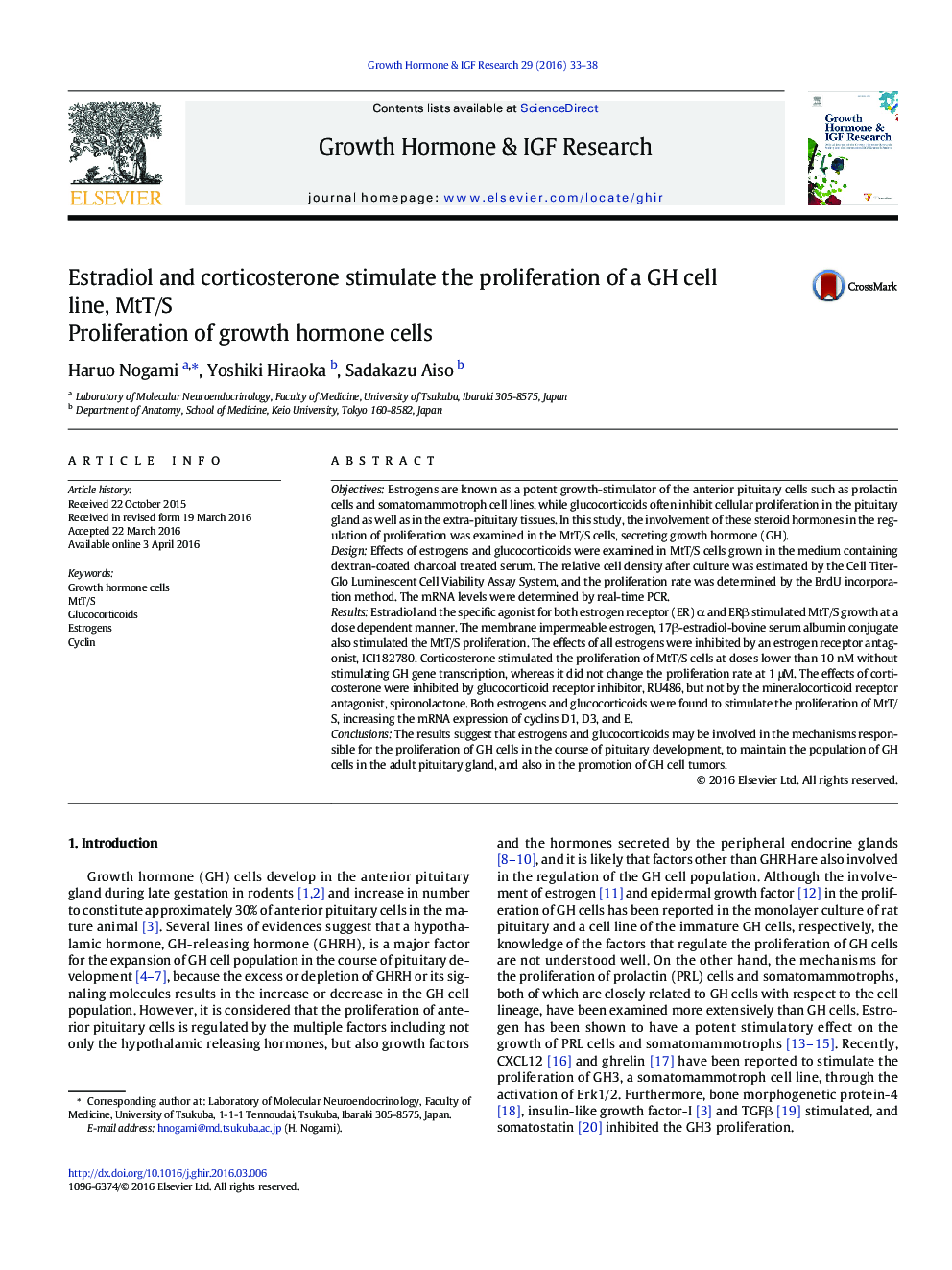| Article ID | Journal | Published Year | Pages | File Type |
|---|---|---|---|---|
| 2802522 | Growth Hormone & IGF Research | 2016 | 6 Pages |
•This work demonstrated the role of estrogens and glucocorticoids on GH cells.•Estrogen and glucocorticoids induce G1 cyclins in GH cells.•The possible involvement of membrane ER on GH cell proliferation was demonstrated.•Glucocorticoids stimulate proliferation at doses lower than that for genomic effects.
ObjectivesEstrogens are known as a potent growth-stimulator of the anterior pituitary cells such as prolactin cells and somatomammotroph cell lines, while glucocorticoids often inhibit cellular proliferation in the pituitary gland as well as in the extra-pituitary tissues. In this study, the involvement of these steroid hormones in the regulation of proliferation was examined in the MtT/S cells, secreting growth hormone (GH).DesignEffects of estrogens and glucocorticoids were examined in MtT/S cells grown in the medium containing dextran-coated charcoal treated serum. The relative cell density after culture was estimated by the Cell Titer-Glo Luminescent Cell Viability Assay System, and the proliferation rate was determined by the BrdU incorporation method. The mRNA levels were determined by real-time PCR.ResultsEstradiol and the specific agonist for both estrogen receptor (ER) α and ERβ stimulated MtT/S growth at a dose dependent manner. The membrane impermeable estrogen, 17β-estradiol-bovine serum albumin conjugate also stimulated the MtT/S proliferation. The effects of all estrogens were inhibited by an estrogen receptor antagonist, ICI182780. Corticosterone stimulated the proliferation of MtT/S cells at doses lower than 10 nM without stimulating GH gene transcription, whereas it did not change the proliferation rate at 1 μM. The effects of corticosterone were inhibited by glucocorticoid receptor inhibitor, RU486, but not by the mineralocorticoid receptor antagonist, spironolactone. Both estrogens and glucocorticoids were found to stimulate the proliferation of MtT/S, increasing the mRNA expression of cyclins D1, D3, and E.ConclusionsThe results suggest that estrogens and glucocorticoids may be involved in the mechanisms responsible for the proliferation of GH cells in the course of pituitary development, to maintain the population of GH cells in the adult pituitary gland, and also in the promotion of GH cell tumors.
